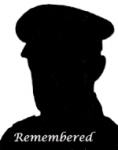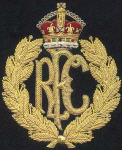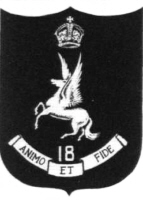





Animo et fide - 'With courage and faith'
Lieutenant, William Harold RYDER
Aged 20

|
William Harold Ryder was born in 1896 (Wetherby Q4-1896 9A:122), Baptised Bardsey, York, 21 November 1896, 3rd son of Charles Foster and Anna RYDER (née POTTER).
In 1898 his father purchased the Great Thurlow estate from Lord Hambledon (the W.H.Smith family). Part of the propeller of the aircraft in which William was killed is incorporated in his memorial in the church in Little Thurlow. 1901 census...Aged 4, he was at Leeds Road, Scarcroft , Wetherby with his father Charles Foster RYDER [45] a brewer born Headingley; brother Daniel G [8] and sisters Agnes [6] and Rosamund [2]. The children were all born in Scarcroft. His mother Anna RYDER[38] born Little Missenden, Bucks was alone at the Hall, Thurlow (apart from 5 servants). His mother died in 1907 and his father re-married to Mabel SIMS in 1911. His father had 5 children by each wife, the youngest was Sue, to become Baroness Ryder of Warsaw 1911 census...Aged 14 he was at Uppingham School. His widower father was at The Grange, Scarcroft, with sisters Agnes and Rosamund (who is now recorded as born in London) and 7 servants. No documented evidence has been found of William in Thurlow, but the family tended to spend 4 months each year in Thurlow. |

|
The badge above is the first squadron badge, the Pegasus symbolic of the squadron's attachment to the Cavalry Corps during the battle of the Somme.
Educated at Uppingham and entered for Magdalene College Cambridge, he volunteered and joined the Yorkshire Hussars in March 1915 and applied for the RFC in August 1916. He was described as an accomplished horseman. His service record shows that he was accepted for training with 40 Squadron on 26th February 1917. On 23rd March his single seat Nieuport Scout overturned after the propeller hit the ground during a practice take off. He wasn't hurt. With 29 Squadron on 19th April he was slightly injured when his Nieuport Scout crashed on a practice take off. He was sent to France in March 1917.with 18 Squadron. On the 6th July both he and his Observer were killed when their DH-4 crashed after pulling out of a dive too suddenly during camera gun practice. Most records seen give his death as killed in action but his personal service record show accident during a training session, also a rank of Flying Officer, a rank not instituted until the RAF was formed in 1918. A further anomaly is that his medal index card shows no medals which is hard to understand when the family instituted 2 private memorials but failed to apply for his medals (Commissioned officers or their next of kin had to apply for their medals)
photo: Commonwealth War Graves Commission He is commemorated with a plaque in Bardsey Church, and also in Little Thurlow St.Peter's Church click here to go to the Commonwealth War Graves Commission website for full cemetery/memorial details |